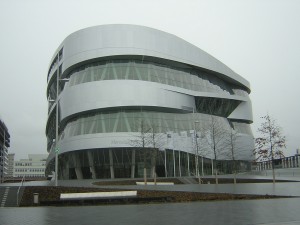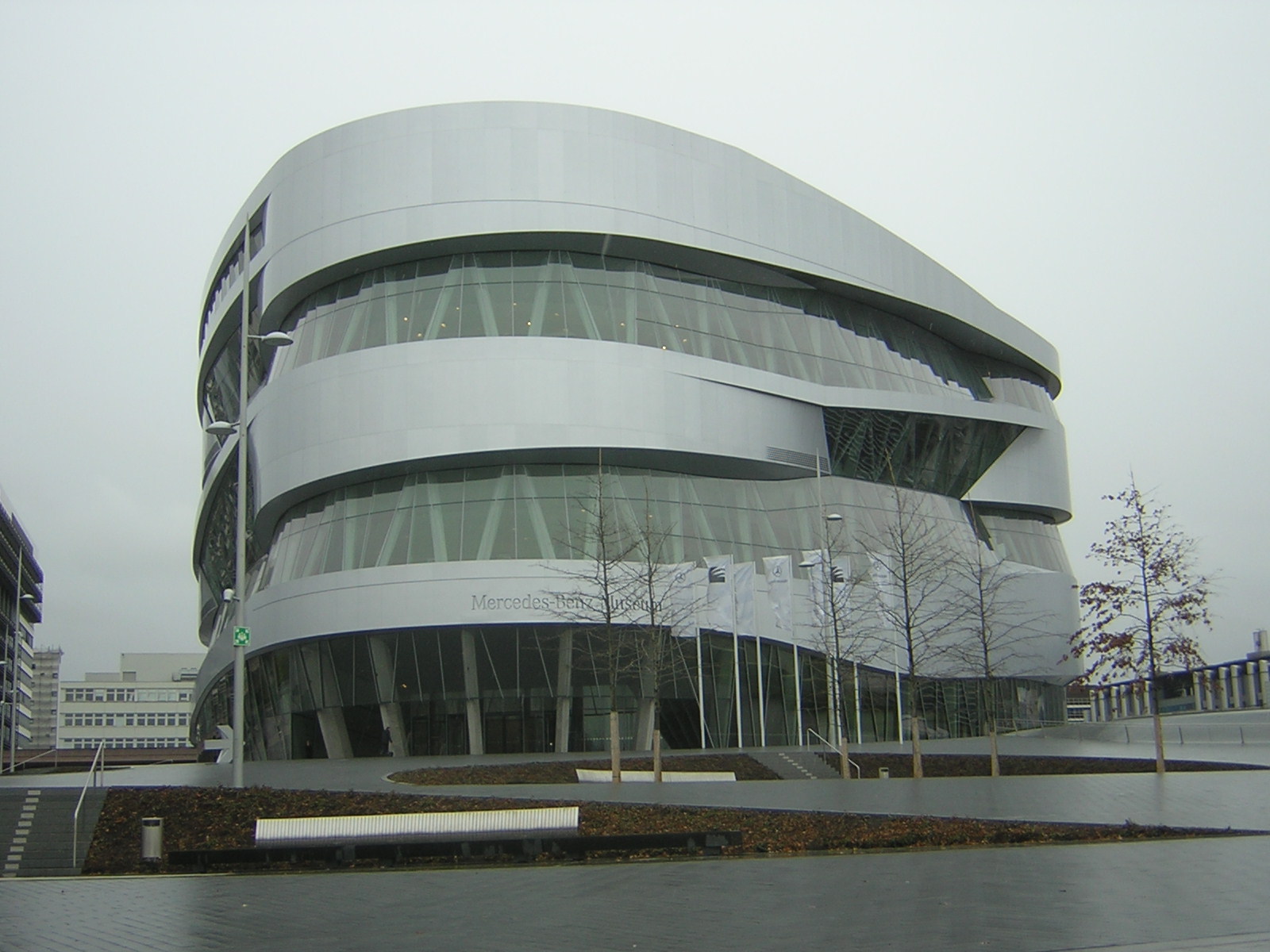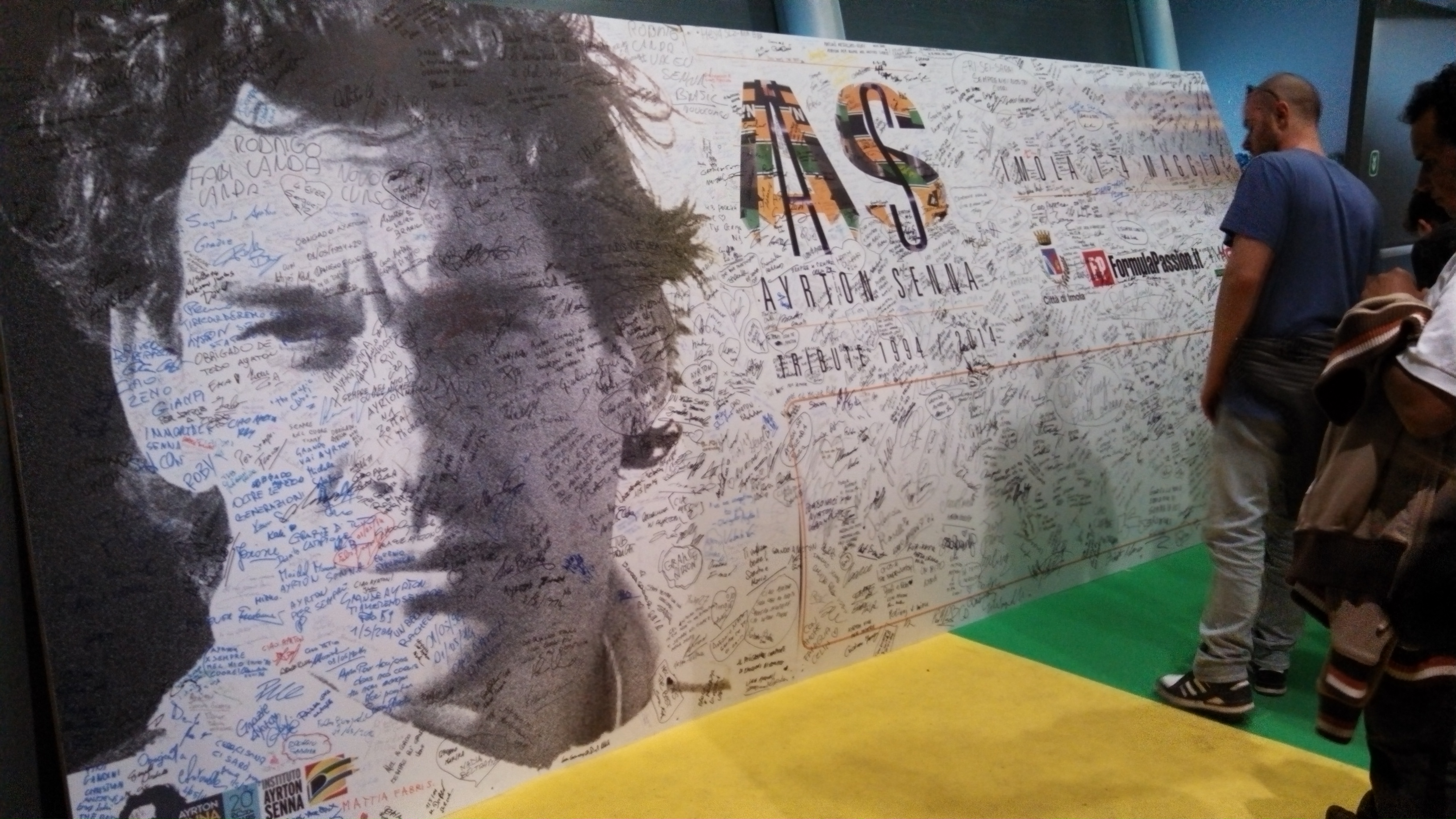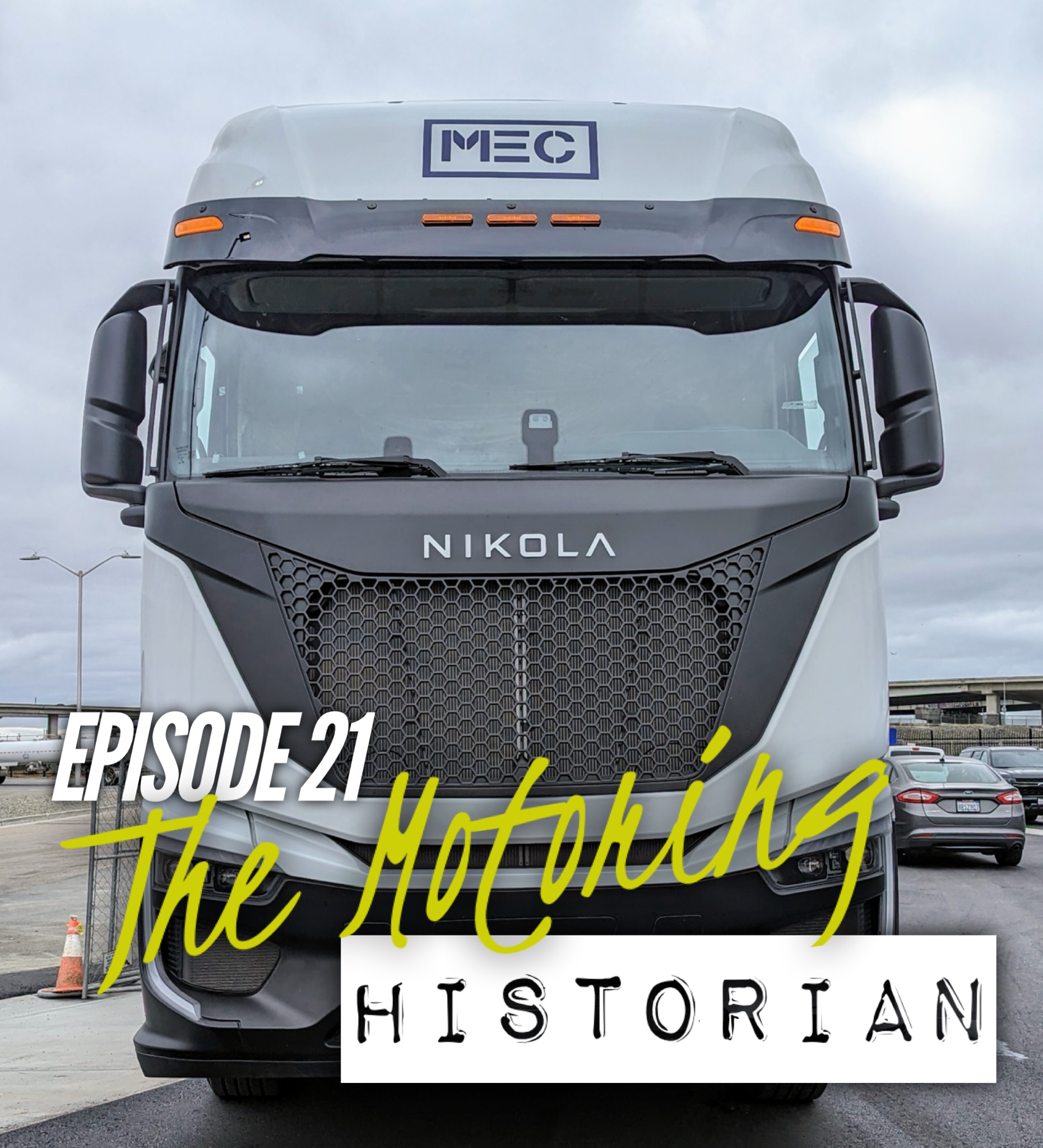No doubt you have heard about the Mercedes museum; for petrolheads, really this place is Ground Zero. This is our story of creation. It even features Three Wise Men. The museum is everything you would expect from the Mercedes Benz “Best Car in the World” organization. The building itself is purpose built, all swoopy dramatic modern architecture in a dull silver, contrasting nicely with leaden German skies. After you get your ticket, an elevator whisks you up to the 7th floor, and the rest of your visit you make your way slowly down through the museum, passing chronologically from one themed hall to the next on wide sweeping ramps. The epiphany moment for me was in the first hall; there’s a three piece diorama featuring Maybach’s gasoline engine, revolutionary in its efficiency, a 4 wheel carriage Daimler bought for his wife, but instead fitted Maybach’s engine to, and the Benz three wheeler that everyone knows as “the first car”.

Clearly, that part of Germany must have been something of an automotive silicon valley, with innovation being driven by many different people. Maybach and Daimler worked together, unaware that barely 60km away, Karl Benz was feverishly working alone to design not just the engine, but the entire vehicle. It was this wholistic conception which is why Benz is generally recognized as having designed and built the first car. Benz worked in secrecy, even waiting until his patents came through before going out for a drive.
Daimler’s vision was much broader – the famed three pointed star symbolizes transportation on land, sea and air. Stationary and marine engine production were staple sources of income to Daimler long before cars were, while the DB600 series v12 aero-engines powered the majority of Luftwaffe planes during World War II . Also in that first hall there is the first motorcycle ( made of wood with these weird stabilizing wheels on outriggers, and a saddle similar to those used for horses) the first truck, and the first bus. So, think what you like about Mercedes-Benz nowadays, it is hard not to feel grateful to them for giving us cars and motorbikes.
The Mercedes Brand
Perhaps more than these engineers, it is Emile Jellinek we driving types owe homage to. He seems something of a chancer – the museum audio guide tells of fortunes won and lost – although his appeal for me is more around the fact he was clearly someone who loved cars. The prototype Monaco GP in the early years of the 20th century was the Nice-La Turbie hillclimb, fulfilling motorsport’s age old duty of entertainment and car sales. Jellinek participated, often driving. In 1901 a Daimler overturned, and killed the driver. Daimler himself was keen to distance himself from the bad publicity and wanted to withdraw his other cars from the event. Instead, Jellinek offered half a million marks to Daimler, and Maybach, to build a car more powerful, faster, and less top heavy than that which had killed Bauer. This special new car, financed by Jellinek, was the first Mercedes. The word is derived from the Spanish word for grace; Jellinek applied it to most of the things he loved best, including a yacht, villas and his daughter.
The engineering revelation on the first Mercedes, the 35hp, was Maybach’s invention of the honeycomb radiator. Prior to that, it had been difficult to make more powerful engines due to overheating.
Daimler and Benz were competitors until, in the face of hyper-inflation in Weimar Republic Germany, they merged. Collaboration first began in 1924; in 1926 a full merger took place, taking the Benz laurel wreaths and Daimler three pointed star to form the badge we are so familiar with, and the company we know as Daimler Benz AG.
It was rather surprising that the museum deals with the war seemingly quite openly; as early as 1938 Daimler Benz was officially an armaments producer; in the final years of the war Daimler Benz management requested so-called “eastern” labourers – forced slave labour comprised of Pows/groups persecuted by the Nazis – in order to meet the production targets set by the government.







